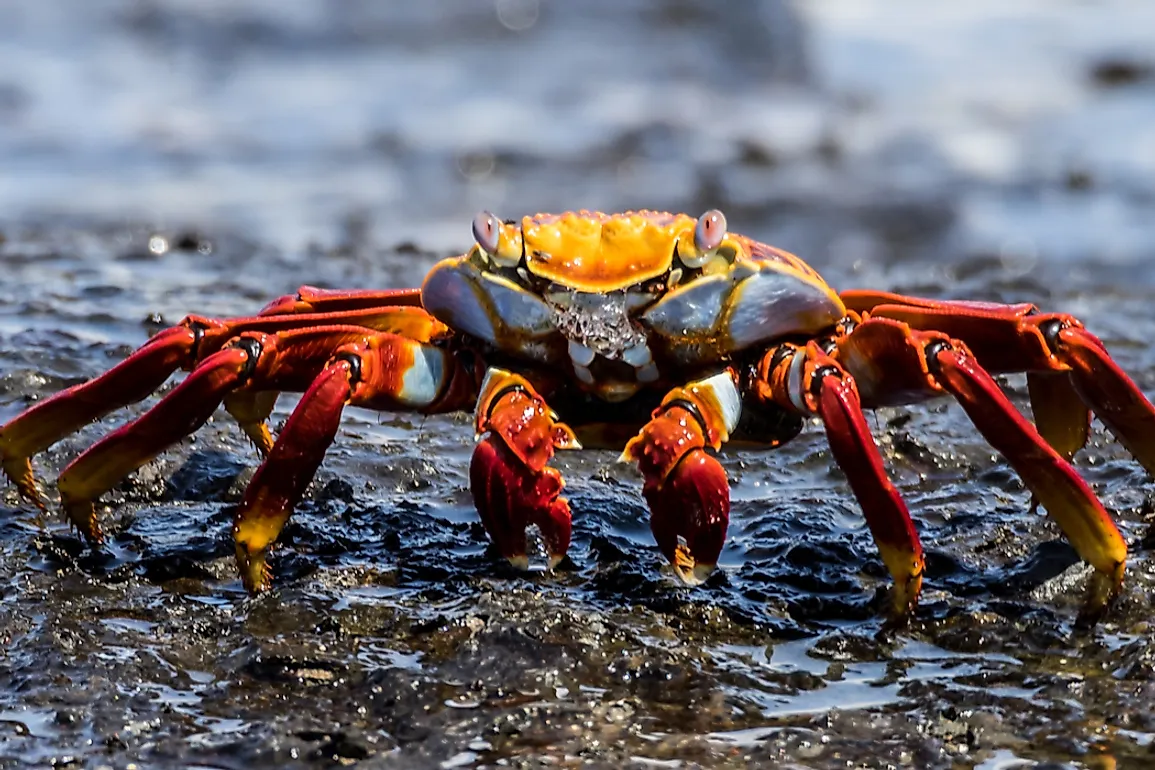What is a Crustacean?

A crustacean is an organism that belongs to the Kingdom Animalia, Phylum Arthropoda, and in the class Crustacea. There are over 67,000 species belonging to this class. Some of the most notable examples include:
- Lobsters
- Woodlice
- Krill
- Shrimp
- Barnacles
- Crayfish
- Crabs
Characteristics and Structures
Crustaceans have three body parts, the head and thorax are fused to form a cephalothorax, and the abdomen. The cephalothorax is covered by a single carapace. Their bodies are usually segmented. Each segment has a pair of appendages. On the segment that forms the head, there are two pairs of appendages which form the antenna. These are the mandibles and the maxillae. The rest of the segments have appendages that are modified to perform functions like locomotion and feeding. The entire body of the crustaceans is covered by a hard exoskeleton, just like the other arthropods. The exoskeleton protects the body from predation and dehydration. To allow the body to grow, the exoskeleton is shed off at particular growth stages.
Reproduction
Most crustaceans reproduce sexually and have separate sexes. However, there are a few crustaceans that are hermaphrodites; they have both female and male reproductive parts on the same body. Examples of hermaphrodites crustaceans are barnacles, remipedes, and cephalocarids. In some instances, some crustaceans may change their sex during their lifetime. Parthenogenesis, a situation where a female organism lays fertilized eggs that hatch without the need of a male organism has been observed in some of the crustaceans. This occurs in many branchiopods. They either release the eggs to the water or hold onto the eggs until they are hatched. Some of them have sacs that hold the eggs until they are hatched.
Ecology and Habitat
Most crustaceans are aquatic organisms. The majority of them live in marine environments but some do live in freshwater. Some of the crustaceans are terrestrial. The terrestrial crustaceans include terrestrial crabs, terrestrial hermit crabs, and the woodlice. Most of the crustaceans are independent, meaning that they move around their habitat freely. However, there are a few that are dependent on their hosts. Most of these parasitic crustaceans are not adapted to rapidly respond to fluctuations in salinity. The bodies of their hosts protect them because the salinity of the body changes gradually compared to the salinity of the water. There are also a few species of the crustaceans that are sessile, such as the barnacles. Being sessile means that they cannot move on their own, they are attached to substrates such as rocks and corals.
Crustaceans as Food
Most crustaceans make delicious meals to human beings. The crustaceans that are consumed are mainly the decapods, literarily meaning ten-footed. The most common decapods consumed are crabs, prawns, lobsters, shrimp, and crawfish. Non-decapod crustaceans like krill are not so commonly consumed like the decapods but a meal in some parts of the world. Crustaceans are commonly consumed in Asian countries, with China as the country with the highest rate of crustaceans’ consumption.











